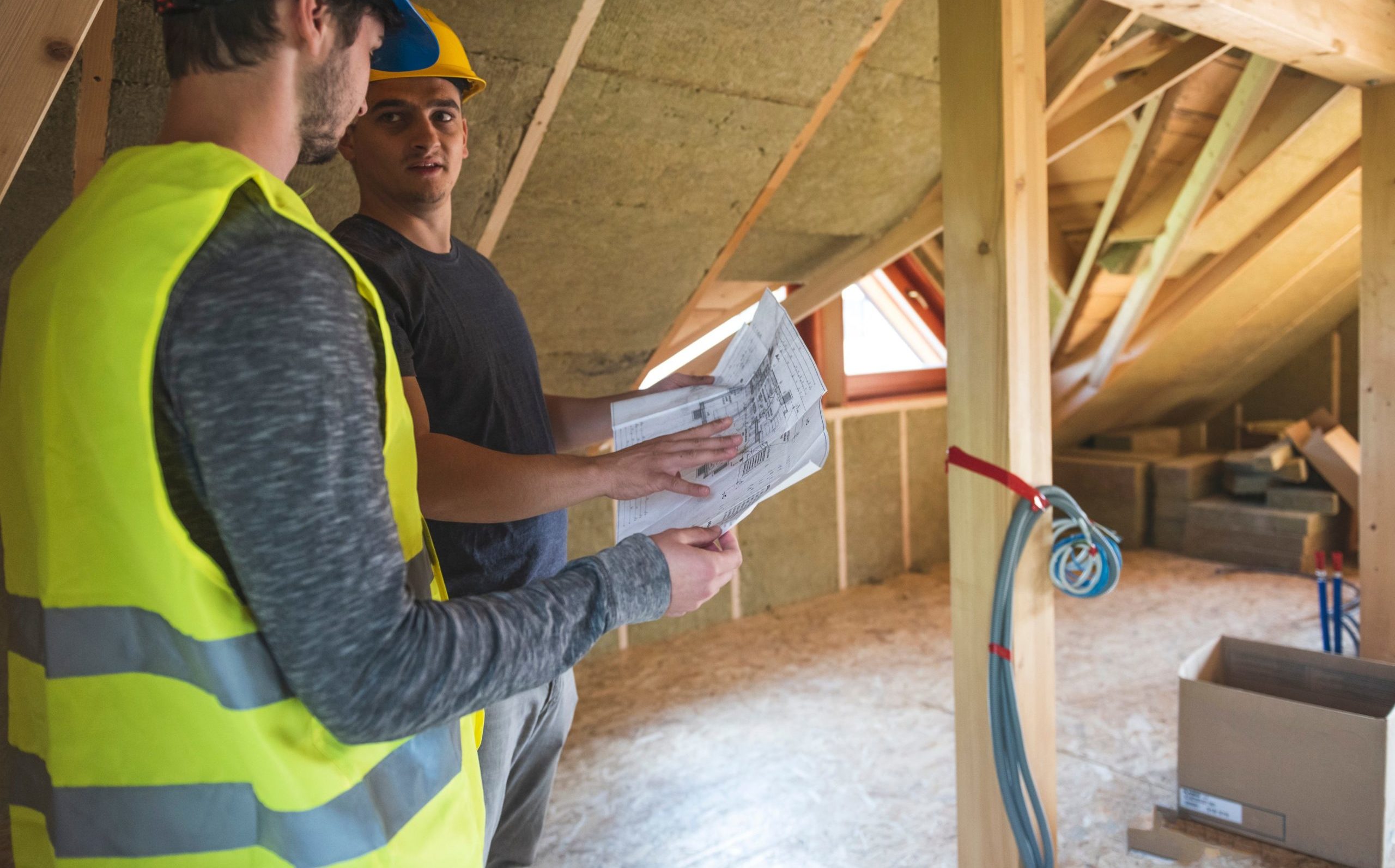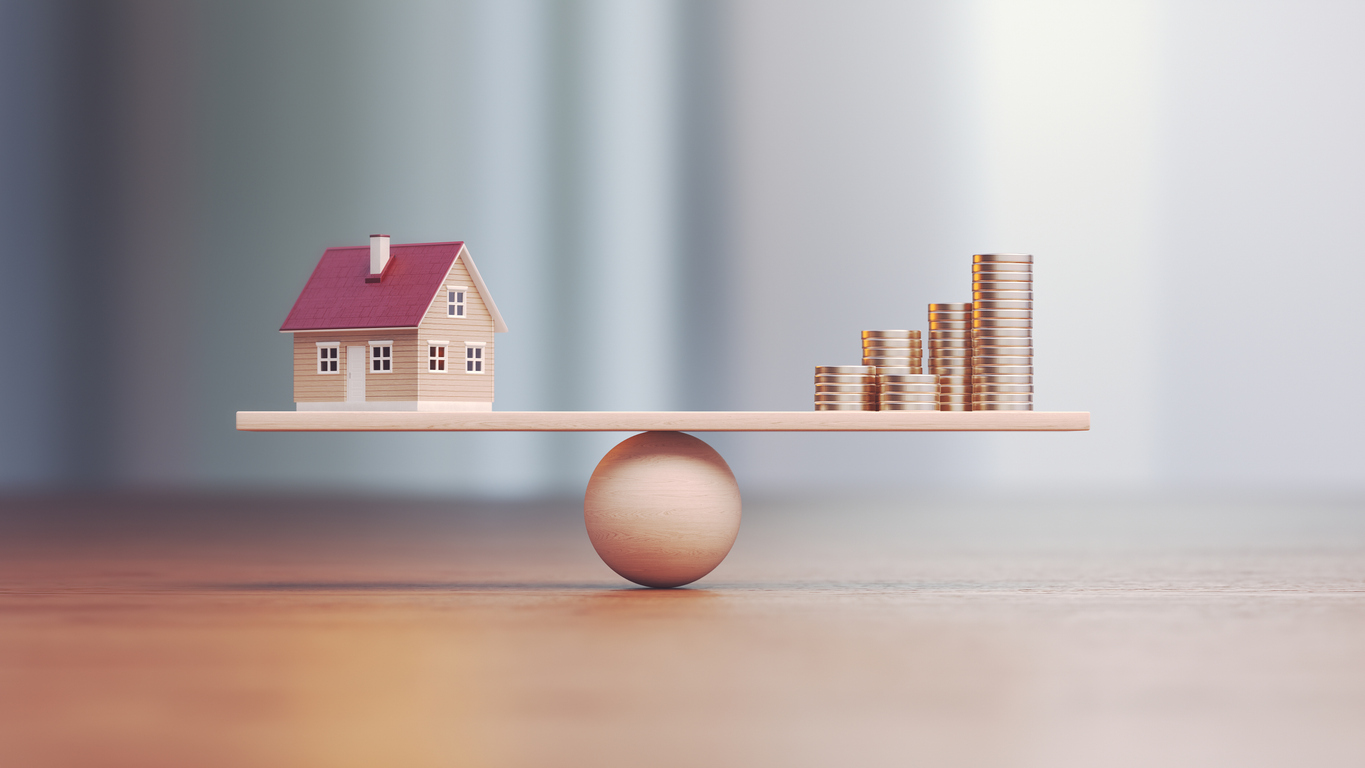
Key takeaways
-
Today’s homeowners have new ecologically friendly materials and technologies available to create a more energy-efficient house.
-
Doors and windows have significant potential for improving energy efficiency within the home.
-
Many energy-saving home improvement projects are simple enough to do yourself.
As everyday costs continue to rise, people are looking for ways to reduce monthly expenses. One way for homeowners to make significant spending cuts is to lower their utility bills.
American homeowners spend an average of nearly $400 a month on utilities. By improving the efficiency of their home’s energy use, homeowners can reduce bills while adding value to their homes. This not only saves money in the short term, but also increases the potential for greater resale value in the future. From simple adjustments to extensive upgrades, home improvements can lower utility bills.
Keep reading to learn how to lower utility bills through effective and profitable home improvement projects.
How to lower utility bills with 7 home improvements
With increased awareness and focus on earth-friendly and energy-saving products and technologies, there are more options than ever for homeowners to improve their home’s efficiency. You don’t have to be a master builder to make simple improvements that can significantly impact monthly expenses. Instructional social media videos are available to demonstrate many home improvement projects as users demand authentic, quality content. Here are seven home improvements that can help to lower utility bills.
1. Seal doors and windows
One of the first things you can do to ensure a more energy-efficient home is to seal all of your doors and windows. As houses shift and settle, doors and windows can become slightly misaligned, creating small gaps in frames. These gaps allow air to leak through your home’s envelope, making it challenging to regulate internal temperature. To maintain a comfortable climate within the home, you wind up using excessive heat and air, which drives utility costs up. Adding caulking and weather stripping around window and door frames helps you eliminate drafts and may reduce heating and cooling costs by 15%.
The following video demonstrates three easy and affordable ways to seal your windows to eliminate drafts and increase energy efficiency in your home.
2. Cover windows
Windows are responsible for about 30% of a home’s heating energy loss. When sunlight shines on windows during the summer months, more than 75% of that sun becomes heat in the house. Consider covering your windows to keep sunlight out, reduce solar heat gain and improve thermal performance. Effective window coverings include:
-
Awnings
-
Shades
-
Light-blocking drapes and blinds
-
Plastic films
- Shutters
-
Storm windows
Not only do these coverings help to lower utility bills, they also provide privacy, reduce glare and can enhance the curb appeal of your home.
3. Replace doors and windows
Some materials are better at blocking heat and air than others. Consider replacing wooden exterior doors with fiberglass doors. Their polyurethane foam core helps insulate against extreme cold and heat. Aluminum, steel and vinyl are also energy-efficient options. If replacing windows, new ones are insulated with several layers of glass, sometimes filled with gas, to help save energy. They can also have a glazed coating to help block against hot and cold temperatures. Rather than metal insulation, they use structural foam to protect against the elements.
4. Add attic insulation
When it comes to heat loss in the home, the attic usually is the biggest culprit. Since hot air rises, insulation helps limit air movement in your house, trapping hot air to keep it from escaping to other areas of the home. In the summer, sun shining directly on the roof increases the temperature of the roof and makes your house hotter.
Without insulation, the transfer of hot air causes temperature fluctuations throughout the home, making it difficult to regulate a comfortable setting. This overworks your heating and cooling equipment and results in high utility expenses.
Attic insulation comes in various materials, from fiber sheets and loose-fill to spray foam. Whatever you choose, attic insulation is one of the most impactful home improvements you can make when learning how to lower utility bills.
5. Switch to LED bulbs
In recent years, LED lights have replaced incandescent bulbs for home illumination. LED bulbs are extremely energy-efficient. They last about 25 times longer, generate less heat and provide better light quality than incandescent bulbs. Other bulbs use reflectors and diffusers to direct the light, which uses more energy. LED bulbs, however, emit light directly, making them more energy-saving and efficient. Consider replacing all light fixtures in your house with LED bulbs. You’ll save money in the short and long run.

6. Replace large appliances
Large appliances – such as the dishwasher, refrigerator, washer and dryer – account for a large portion of your utility bill. Energy-efficient options available today use less power than previous models. Look for energy-friendly brands and choose the right size for your needs to help increase efficiency. Replacing these machines can help reduce energy use and save money on monthly bills. It can also add more value to your home and offer a competitive edge when selling your home.
7. Go tankless
Most houses use a storage-tank water heater to distribute hot water throughout the home. This water heater typically holds up to 80 gallons of water in an insulated tank, where it’s periodically heated and distributed throughout the house. Water stored in the tank cools over time, requiring the heater to warm it intermittently even when not in use. Tankless water heaters don’t heat water until it’s needed, which can represent energy savings of up to 34%. When wondering how to lower utility bills, consider replacing your old storage-tank water heater with a new, more energy-friendly tankless water heater.

Home Improvement Projects are Financially Possible
Home improvements are often necessary to help offset utility bills and add value to your home. While many upgrades are simple enough to do yourself, costs can add up. At Unlock Technologies, we provide a loan alternative that gives you access to your home equity without selling your home. We’ll give you cash in exchange for a percentage of your home’s equity. This can help provide you the cash to make home improvement projects much more possible.
Contact Unlock Technologies today to learn how to unlock equity for your property.
The blog articles published by Unlock Technologies are available for general informational purposes only. They are not legal or financial advice, and should not be used as a substitute for legal or financial advice from a licensed attorney, tax, or financial professional. Unlock does not endorse and is not responsible for any content, links, privacy policy, or security policy of any linked third-party websites.”


